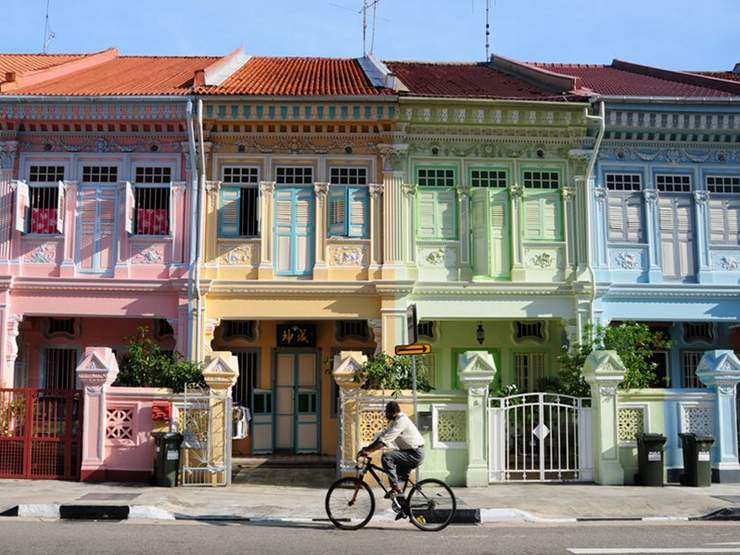
Image Source: Singapore Guide, (n.d.). Maxwell Hawker Centre. [image] Available at: http://static.asiawebdirect.com/m/phuket/portals/www-singapore-com/homepage/top10/top10-singapore-hawker-centres/allParagraphs/03/top10Set/01/image/Maxwell-Hawker-Centre.jpg [Accessed 24 Jan. 2017].
Hawker Centres are buildings, usually found in various parts of Asia, that house and sell a variety of local affordably-priced food. Singapore, in particular, is a country well known for their hawker centres, both to tourists and locals.
According to the Strait Times, however, these hawker centres face a bleak future (2016). Although they are a popular destination for tourists and locals, Christopher Vanderperre states that, “…when we go to a hawker centre, we see more shops that are closed or more shops offering something different. I’ve seen French cuisine being offered in hawker stalls which is much more expensive than your usual plate of noodles” (Strait Times, 2016). As Singapore’s rich history and food culture has been correlated with hawkers since the 1800s, and still continues to be an important aspect of Singapore’s heritage, it is vital that not only the government takes initiatives in order to support this important aspect of Singapore’s heritage, but also for locals to be aware of the possible decline of this culture. There has been an increase in the closure of hawker stalls, due to the lack of successors succeeding the previous job.
The closing of local hawker stalls are not the only concern for Singapore, as the opening of glocalized hawker stalls can also be a major concern to declining local food culture. Food found in hawker stalls has been a part of Singapore for over 40 years, passing down from father to son. An increase in glocalized hawker stalls may indicate a shift towards western or glocalized food, and away from local food. With this shift, it may indicate a declining food culture as the new generation will grow up eating glocalized food instead of local food.
The government has taken various initiatives in order to combat this problem. One design initiative taken, ‘Our Hawker Centres –A Heritage and Art Project’, raises awareness of the cultural value of hawker centres towards the new generation (National Environment Agency of Singapore, 2015). This is done by facilitating a space in hawker centres where locals are allowed to create murals and installations. Over 70 schools, local artists and organizations have taken part. A few indicators of a good design is by ensuring that the values of the target audience is considered, the design contributes positively to those using them, and the heritage and cultural aspects are preserved. This design initiative has taken into consideration these aspects as it allows for those involved to feel as though hawker centres are a part of their identity instead of just a place to eat or something that they read about in the newspaper, promotes hawker centres as part of the food heritage and culture to the new generation, and allows the new generation to be a part of that culture and history. In addition, the installation of murals and artworks allows for “vibrancy, color and creativity to enliven the environment for hawker food experiences that continue to be well-loved at home…” (National Environment Agency of Singapore, 2015). This addition of new murals and installations preserves the heritage, lengthens the future of this heritage, and allows the new generation to understand where they fit in Singapore’s food culture and heritage.
Other design initiatives proved to be quite successful included the teaching of young hawkers to succeed the hawker stalls, the subsidy of old hawker stalls by the government and high barriers to entry for newer hawker stalls.
By taking into consideration the good design process aspects in design initiatives, particularly importance of culture, heritage, and the values of the community involved, it allows for goals to succeed and in this case, heritage and cultural values to be preserved.
References:
National Environment Agency of Singapore. (2015). Heritage And Art Initiative Launched To Celebrate Singapore’s Hawker Centres. [online] Available at: http://www.nea.gov.sg/corporate-functions/newsroom/news-releases/heritage-and-art-initiative-launched-to-celebrate-singapore-s-hawker-centres [Accessed 26 Jan. 2017].
National Library Board, S. (2016). Hawker centres. [online] Eresources.nlb.gov.sg. Available at: http://eresources.nlb.gov.sg/infopedia/articles/SIP_1637_2010-01-31.html [Accessed 24 Jan. 2017].
The Strait Times, (2016). Singapore’s fading food hawker heritage. [online] Available at: http://www.straitstimes.com/singapore/singapores-fading-food-hawker-heritage [Accessed 24 Jan. 2017].


 Image Source: Apa Publication Ltd, (n.d.). Singapore Shophouses. [image] Available at:
Image Source: Apa Publication Ltd, (n.d.). Singapore Shophouses. [image] Available at: